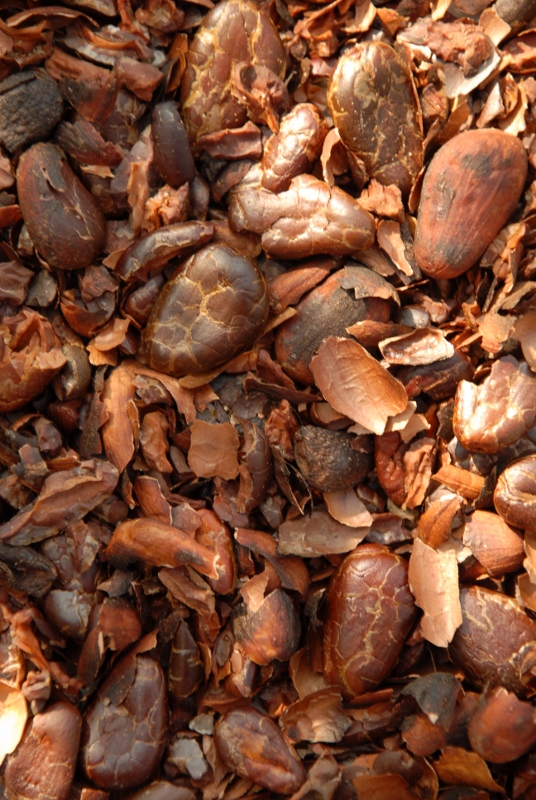THE DIVINE DECADENCE
Cocoa is a complex blend of over a hundred flavor components.
Among the great pleasures of Pre- Hispanic Mexico, nothing could compare to a jicara ( a mug made from a hollowed dried fruit or guaje) of frothy hot chocolate, which for the Aztecs was the symbol of hospitality and wealth.
Cocoa beans were used as coins throughout the Aztec and Central-American areas. Cocoa bean cultivation in these regions gave rise to powerful kingdoms which established an enormous commercial net in Central America. During the Classic Period Mayan rulers consumed it in great quantities.
There were different ways to prepare cocoa, cocoa beans could be toasted, ground and flavored with vanilla, sometimes the fat from the beans was mixed with corn to make a rich drink or tender cocoa beans would be mixed with honey.
If the drink was being prepared for a great Tlatoani (ruler) the beans would be carefully cleaned, separated, ground three times and then mixed with cooked corn, then hot water was added. The mixture was strained several times until it became frothy. It should not have too much starch or too much water and it was served in a beautifully decorated jicara.
It is known that Spanish ladies during the Colony were so fond of chocolate that they had their maids bring them steaming hot cups of chocolate to church because they could not resist the whole service without the invigorating drink.
No one knows for sure why chocolate holds such a special attraction for us, though theories do exist. It may be the caffeine content, which acts as a stimulant, or the generous doses of theobromine which stimulate the muscles more than the brain. One exciting theory speculated that chocolate contains phenylethylamine (PEA), a stimulating mood-elevating brain chemical. Some psychiatrists speculate that a craving for chocolate represented an attempt to raise brain levels of PEA. Since PEA is naturally produced during periods of elation such as those experienced while falling in love, perhaps chocolate cravings are really an attempt to duplicate a lover´s “high.”
Perhaps it is the flavor of chocolate itself that explains the obsession. Cocoa is a complex blend of over a hundred flavor components, more than twice as many as are found in the simpler treats of strawberry or lemon. Chocolate is also rich in volatile compounds that waft up the back of the throat to tickle the nose with fruity, earthy, malty, and floral scents. And then there is the velvety melt-in-your-mouth feeling of chocolate as it transforms from a solid to liquid in just body temperature.
Tantalizing though these theories are, they are not as tantalizing as chocolate itself. Perhaps this gift of the gods will -or should- remain one of the sweet mysteries of life.
Here is a treat from the gods:
CHOCOLATE SILK BREAD PUDDING
4 cups milk
1/2 stick butter cut into pieces
4 ounces unsweetened chocolate chopped
2 large eggs
1/2 cup sugar
1 teaspoon vanilla
1/2 teaspoon cinnamon
1/4 teaspoon salt
2 cups fine fresh bread crumbs
1/4 cup Kahlua
ice cream as an accompaniment
In a large saucepan heat the milk, the butter, and the chocolate over moderately low heat, whisking until the butter and chocolate are melted and the mixture is smooth. In a bowl whisk together the eggs, the sugar, the vanilla, the cinnamon and the salt and whisk in the bread crumbs. Add the hot milk mixture in a stream, whisking and incorporate the Kahlua. Pour the pudding mixture into a buttered 1 1/2 quart shallow baking dish. Bake the pudding in the middle of a preheated 325 F oven for 45 minutes, or until it is set and a tester comes out clean. Let the pudding cool in the dish on a rack and serve it warm or at room temperature with the ice cream. Serves 6.
-Originally published in ADIP, December 2000




